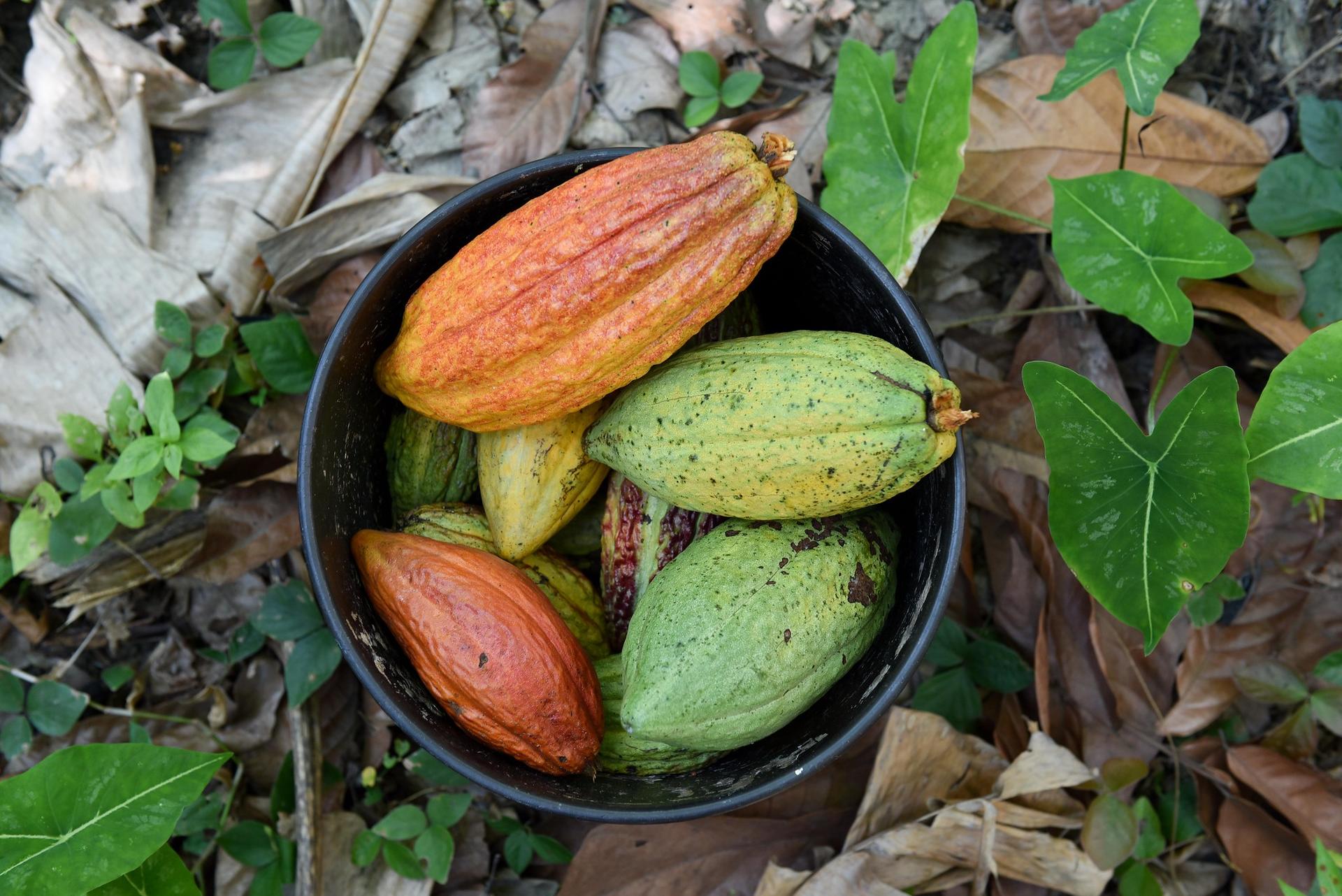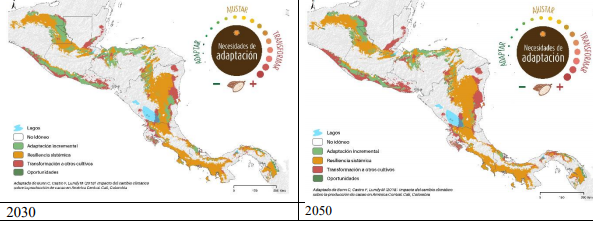Climate Smart Cocoa Programme

Seeking High Temperature and Drought Tolerance in Cacao. A Knowledge Sharing Platform
An integrated approach to improving yield efficiency and resilience in the face of climate change through better use of cacao genetic resources.
World Cocoa Foundation’s Latin American Country Climate Smart Cocoa Programme
In relation to the CFCE project, it's worth mentioning WCF's Climate Smart Cocoa Program. It works in key LAC producer countries and aims to develop a common strategy and clear investment pathways to increase industry engagement and investments in climate smart agriculture (CSA). The Program focuses on knowledge development and cross-learning.
The programme is scaling Climate Smart Cacao production practices, and promoting collective learning about agroforestry systems, including assessing their cost-benefits aided by an online platform. Guharay introduced four useful tools that have been developed under the programme:
- An atlas of climate change impact on LAC cocoa growing areas that informs stakeholders on the level of adaptation that will be required (incremental, systemic or transformational). This is based on the CGIAR Dataverse.
- An online platform for prioritizing CSC practices and elaborating farm development plans based on climate exposure and climate risks (Clima app- based on rainfall and temperature predictions).
- An online platform for Monitoring, Evaluation and Collective Learning about Climate Smart Cocoa Agroforestry systems and productivity improvements (14% in 3 years).
- An online platform for cost-benefit analysis of Climate Smart Cocoa Agroforestry systems for profitability assessment, including coffee, banana, other fruit trees, timber trees, other tree species, and intercrops.

